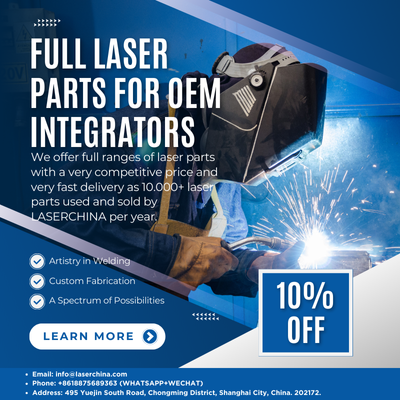A fibre welder is a specialized welding machine that uses fiber laser technology to join metals with high precision and speed. But many people still ask: What makes fibre welders different from traditional welding machines, and are they worth the investment? The answer is yes — fibre welders are transforming industries with their efficiency, precision, and versatility.
What Is a Fibre Welder?
A fibre welder uses a fiber laser as its energy source to perform welding. Unlike traditional arc welding, where electric arcs generate heat, fiber lasers use concentrated light beams delivered through fiber optic cables. This allows for a highly controlled and focused energy output, resulting in clean, strong, and precise welds.
How Does Fibre Welding Work?
In fibre welding, a laser beam is directed onto the metal surfaces to be joined. The intense heat melts the metals at the weld joint, allowing them to fuse upon cooling. The entire process is fast, and because of the laser’s precision, there’s minimal distortion and very little post-weld cleanup required.
Key Advantages of Fibre Welders
1. High Precision and Clean Finish
Fibre welders produce narrow, deep welds with minimal spatter and distortion. This makes them ideal for industries where clean aesthetics and structural integrity are crucial, such as aerospace, automotive, and medical device manufacturing.
2. Speed and Efficiency
Compared to TIG or MIG welding, fibre laser welding is much faster. This leads to increased productivity and lower labor costs, making it ideal for mass production environments.
3. Low Heat Input
Because the laser is highly focused, there is less heat spread to the surrounding areas. This reduces the risk of warping or damaging heat-sensitive components.
4. Versatility
Fibre welders can join a wide range of metals, including:
-
Stainless steel
-
Carbon steel
-
Aluminum
-
Copper
-
Titanium
Some advanced machines can even weld dissimilar metals, opening up more applications.
Common Applications of Fibre Welders
-
Automotive manufacturing (e.g., battery packs, exhaust systems)
-
Electronics (e.g., mobile phone components, sensors)
-
Jewelry making (for fine, precise joints)
-
Medical devices (e.g., surgical tools, implants)
-
Aerospace components (e.g., turbine blades)
Price Range in 2025
Fibre welders are available in various power levels, from small handheld units to large industrial systems. As of 2025, prices typically range from:
-
$4,000 to $7,000 for entry-level handheld models (1000W to 1500W)
-
$8,000 to $20,000 for mid-range machines (2000W to 3000W)
-
$25,000 and up for high-power industrial systems
Chinese manufacturers offer more affordable options, while European and Japanese brands tend to be on the higher end but come with premium quality and support.
Is a Fibre Welder Right for You?
If your business requires fast, clean, and precise welding, investing in a fibre welder can significantly enhance your production capacity and product quality. It’s especially useful for industries where appearance and structural strength are critical.
However, for general-purpose welding or small repair jobs, traditional methods like MIG or TIG might still be sufficient and more budget-friendly.
Final Thoughts
A fibre welder represents the next step in welding technology, offering unmatched precision, speed, and versatility. While the initial investment is higher than conventional machines, the long-term gains in productivity, quality, and efficiency make it a wise choice for forward-thinking businesses in 2025.
